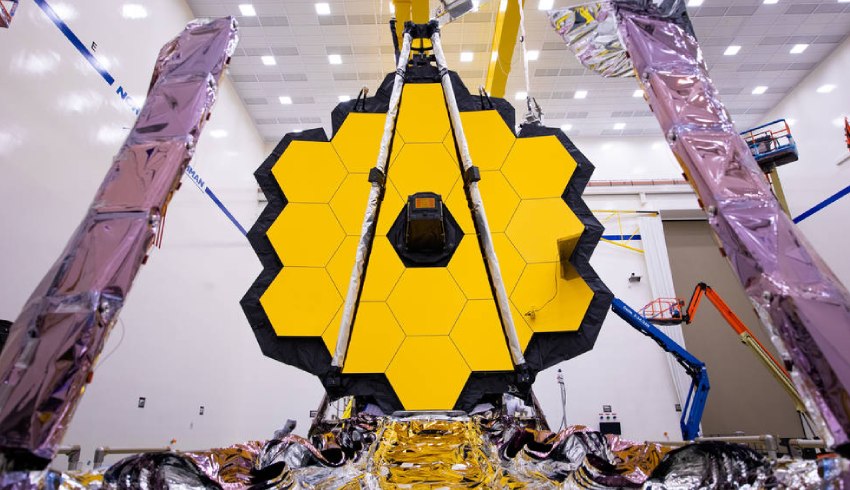
The new space observatory was initially planned to launch on 18 December on an Arianespace Ariane 5 Rocket, from a satellite preparation facility in Kourou, French Guiana.
The James Webb Space Telescope will now be launched “no earlier than” 22 December, as NASA investigates if the incident caused any damage to the telescope.
According to a NASA statement, technicians were this week preparing to attach the Webb telescope to the launch vehicle adapter, when a sudden and unplanned release of a clamp band caused a vibration throughout the Webb observatory.
NASA said the clamp band secures the Webb telescope to the vehicle adaptor, while the vehicle adaptor is crucial to integrate the telescope with the upper stage of the Ariane 5 rocket for its launch.
A NASA-led anomaly review board was immediately convened, and investigations are now underway to investigate the incident and perform additional testing in order to “determine with certainty” that the incident did not damage any of the space observatory’s components.
Testing and investigations are expected to conclude at the end of this week, at which point NASA and its mission partners, including Arianespace, will provide an update.
The US$10 billion telescope is being developed and launched in an international collaboration between NASA, the European Space Agency, the Canadian Space Agency and Arianespace.
This mission – dubbed VA256 – has been in the making for 14 years and is said to be the most powerful space telescope launched, following the already orbiting Hubble telescope.
NASA said Webb will explore “every phase of cosmic history – from within our solar system to the most distant observable galaxies in the early universe, and everything in between.”
Arianespace parent company ArianeGroup is the lead contractor of the vehicle’s development and production, which is now resting in its final location at Northrop Grumman’s facilities in California before launch.
“We are extremely honoured to orbit NASA’s James Webb Space Telescope with Ariane, a ‘first’ for Arianespace and the European space team,” said Stéphane Israël, CEO of Arianespace, earlier.
“We will soon know more about the deepest secrets of our universe, especially how the first galaxies, stars and planets were born and have been evolving since then,” added Israël.
The ESA developed the Ariane 5 modifications for the mission, including the upper part elements, fairing, flight program and procurement of the launch program.
Beatriz Romero, head of the Webb project at Arianespace, said the mission is now entering its “final preparation phase” ahead of the campaign.
“Ahead of us, we will see important milestones, such as the mating of the satellite with the launcher, which will require the highest level of skill, dedication and excellence,” she said.
Meanwhile, Gregory Robinson, Webb’s program director at NASA headquarters in Washington, said, “Webb is an exemplary mission that signifies the epitome of perseverance.
“Now that we have an observatory and a rocket ready for launch, I am looking forward to the big day and the amazing science to come.”

Hannah Dowling
Writer – Defence and Aerospace, Momentum Media
Hannah joined Momentum as a journalist in 2019, and has since written breaking news stories across a diverse range of corporate industries, including finance, real estate, investments and aviation. She has a keen interest in the global aviation sector, with a particualy focus on improving overall individual wellbeing across the aerospace industry.
Hannah graduated from Macquarie University in Sydney Australia with a Bachelor of Media (Journalism) and is currently pursuing postgraduate studies.
Send Hannah an email at [email protected] or connect via Twitter or LinkedIn.
Receive the latest developments and updates on Australia’s space industry direct to your inbox. Subscribe today to Space Connect here.









